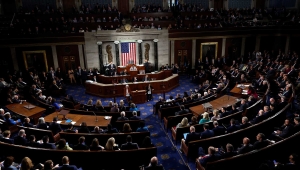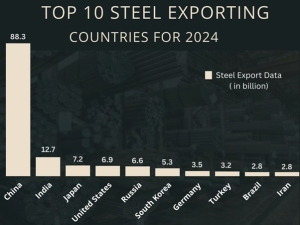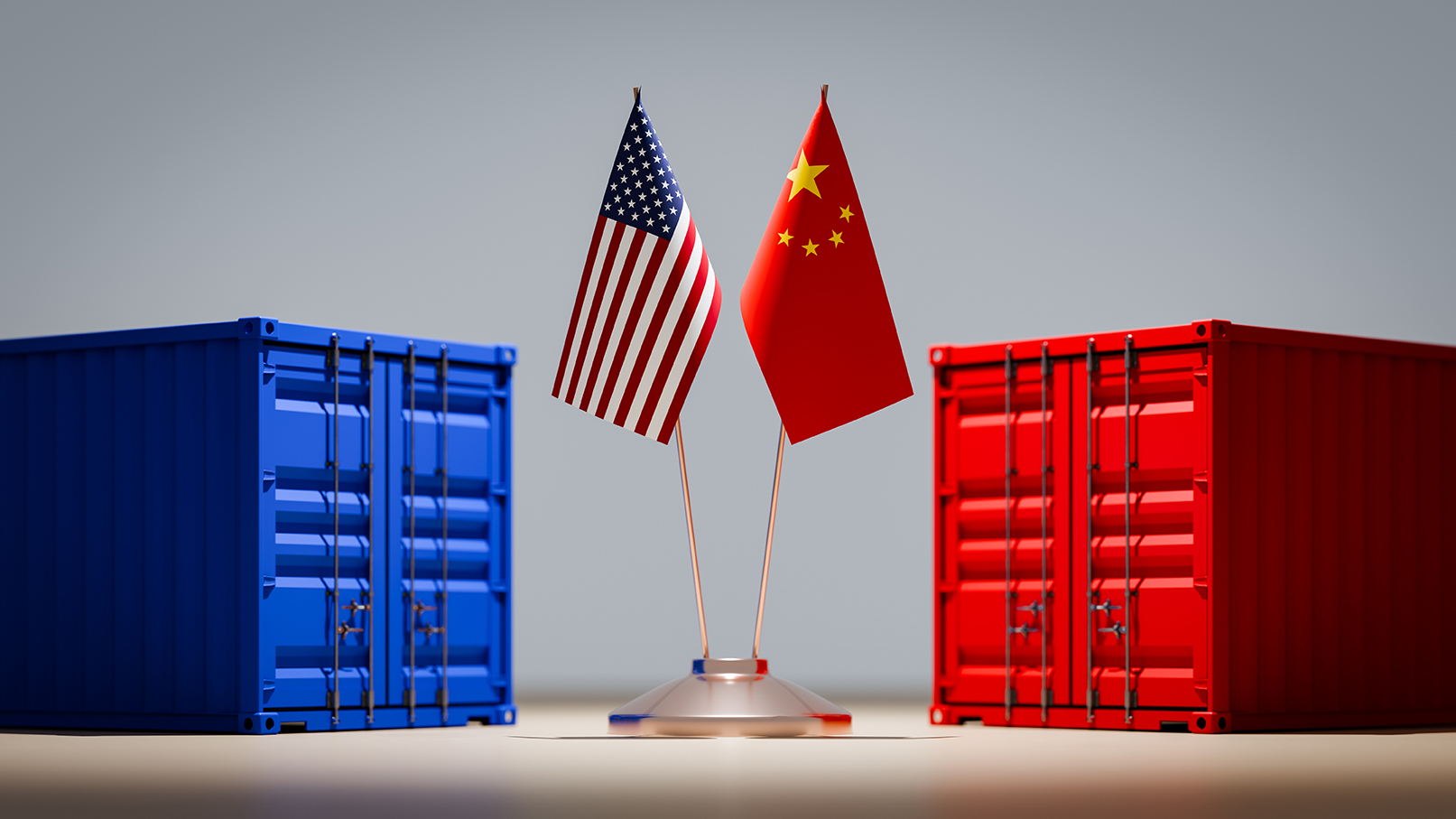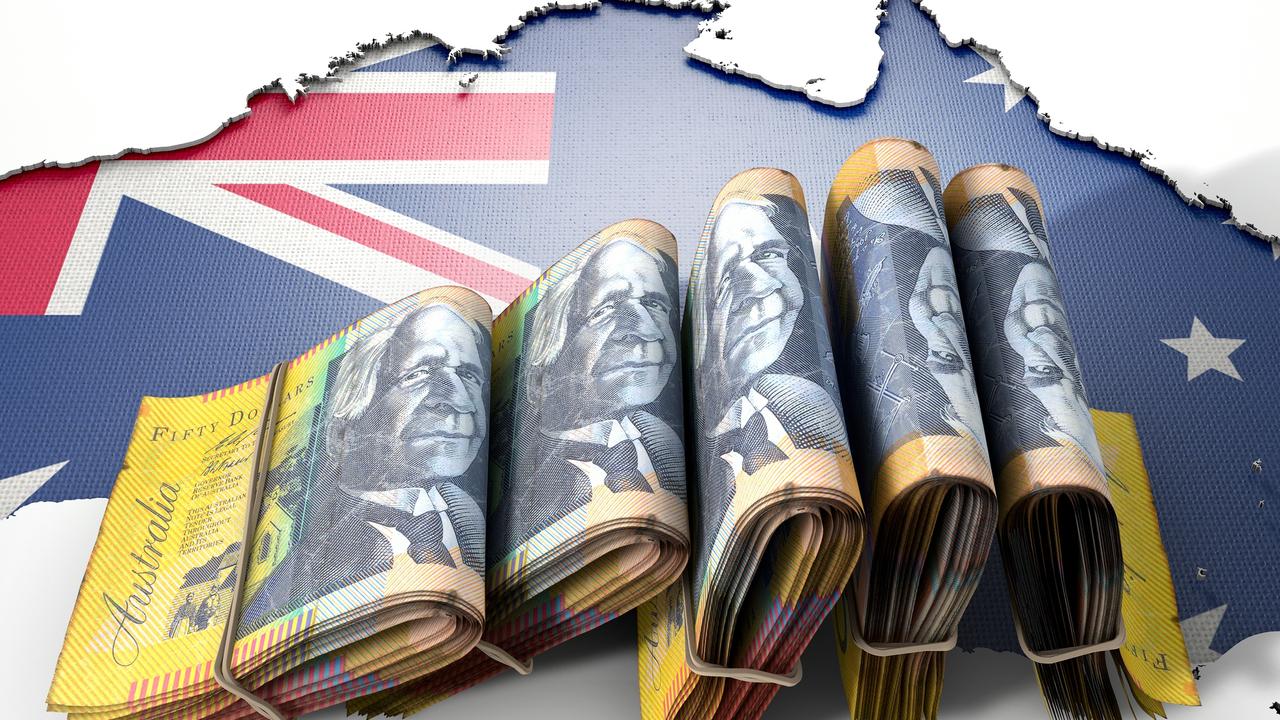市场资讯及洞察
.jpg)
10月21日收盘,贵金属市场出现明显回调。伦敦现货黄金盘中最低跌至4002美元/盎司,沪金(au7777)下跌4.75%,报943.3元/克,创下2013年以来最大单日跌幅。全球黄金股和金矿股同步下挫,美股的GLD、GDX下跌约5%,国内的山东黄金、中金黄金、赤峰黄金等个股跌幅均接近或超过4%。
此前两个月,黄金价格持续上行,主要受美国政府关门风险、贸易摩擦升温以及各国央行增持黄金等因素推动。然而,10月21日欧洲多国领导人发表联合声明,支持通过谈判推动俄乌停火,市场由此预期地缘政治风险可能缓和,避险需求下降,金价随即转为下行。
同时,前期涨幅过快积累了较多获利盘。黄金价格一度接近4400美元/盎司,短期内出现明显超买迹象,于10月中旬成为全球最高市值的资产大类。

部分投资者选择在高位获利了结。美元指数的短期反弹也对黄金形成一定压力,资金流向出现调整。
白银市场的波动更加明显。白银期货单日下跌超过7%,为十余年来最大跌幅。本轮白银上涨行情始于10月初,期间价格突破50美元关口,现货市场短缺、租赁利率飙升等因素推动价格快速上升。随着逼空行情结束,投机性资金回撤,银价在短时间内大幅回落,几乎回吐了此前两周的涨幅。
除地缘政治变化外,技术性和结构性因素也在加速调整。美国政府临时关门导致持仓数据缺失,市场对投机性多头头寸规模缺乏清晰判断,放大了价格波动。印度节日季买需阶段性结束,亚洲实物黄金买盘减少,也在一定程度上削弱了现货支撑。
从市场结构来看,此次调整具有阶段性特征。过去几周,黄金、白银、美股以及美元指数同步上涨的格局本身较为罕见,显示资金短期内对不同资产类别的配置逻辑出现错位。随着避险情绪减弱和美元走强,贵金属市场的价格修正属于正常的回归过程。
白银走势的变化具有代表性。10月9日突破50美元后,市场情绪高涨,资金迅速集中于贵金属板块,印度主要节日集中在10-11月,也对于白银买盘形成强烈支撑。但从10月13日开始,随着供需关系趋于平衡、逼空行情缓解和印度节日季的传统买盘在月中逐渐告一段落,白银上涨动能减弱。本轮回调主要体现为市场在高波动阶段的自然降温。

国际投行对后续走势看法不一。花旗银行维持金价4000美元的中期目标,认为在回调后实物买盘可能重新介入,从而限制下行空间。瑞银则认为短期市场仍由期货抛售主导,现货需求疲弱使金价在短期内可能继续承压。
总体来看,当前贵金属市场的波动更多反映资金面和情绪面的调整,而非基本面的根本性转变。短期内,金价预计在高位震荡,中期走势仍取决于美国经济数据、通胀预期以及美联储的货币政策方向,请大家重点关注即将到来的周五美国CPI、下周美联储FOMC会议和11月份中美贸易谈判进展,都会对黄金价格造成一定影响。
从历史经验看,黄金在快速上涨后出现短期调整并不罕见。价格修正往往有助于市场重新建立平衡。未来若全球经济不确定性仍然较高,或通胀压力再度上升,黄金仍具备重新获得支撑的可能。

对于投资者而言,当前阶段的重点在于关注宏观数据变化和政策信号,而非追逐短线波动。黄金作为资产配置的一部分,其中长期价值仍需结合全球经济走势与货币环境综合判断。


热门话题
随着特朗普重新执掌白宫,在短短1周内他宣布了一系列和之前拜登政府截然相反的政策。从军事,外交,内政,移民以及外贸上全面主动出击,并且频繁使用了一个他颇为擅长的技术方法:极限施压。这个中文词汇最早出现在2019年中美贸易战的官方新闻稿里。当时中方的新闻稿提到了美国使用了极限施压的方法希望迫使中国可以调整到符合美国期望的贸易条款里。所谓极限施压,其实英文叫做maximum pressure。顾名思义,就是在某个领域(通常是外交领域)给予对手最大程度的压力,以测试对方底线,以及达成自己最大的利益。

特朗普看似经常大放厥词,说一些不靠谱的话,其实很多时候,这些发言和发在社交媒体的惊人言论都是经过其背后团队精心策划的。例如在之前针对加沙地区的停火协议,以及针对伊朗的核武器等问题上,特朗普使用几乎直接威胁的方式明确警告了对手,而在针对加拿大,墨西哥和中国的关税问题上,特朗普也使用了极限施压的办法:先扔出准备最高加税50%的惊人言论,给与对方极大的心理压力,之后等真正实施的时候,却从10%开始测试对手,如果得不到有效回应,则会继续提高压力阀。其实这种策略,和我们平时我们玩的扎金花或德州游戏很相似。特朗普就类似于一个有着巨大资金背景的玩家,加入他带啦1万现金,那其他玩家可能就只有几百或最多一千现金。而特朗普实施的极限施压,就类似于上手就是500下注,或者直接20倍不看牌蒙一把。500,对他来说只是二十分之一,而对其他对手来说,可能就是全部身家。在这种严重不对等的情况下,对手不但会面临巨大的压力,而且很容易会因为压力巨大的而出现纰漏或错误。而实力雄厚的玩家则可以因此抓住机会而继续进攻。这种策略虽然非常不地道,但是不得不承认,不但在牌桌上有效,在外交领域也同样奏效。

可以预见,在未来很长一段时间里,特朗普都将会充分利用美国的经济,军事优势地位来最大程度给予对手极限施压,以最大程度为美国谋利。今天我们要来说的是更加直接的问题:美国目前的政策下,对中国,对澳洲的影响是什么?其实在回答这个问题之前,我们只需要知道两个信息:美国是中国最大的出口买家客户。美国是澳洲前5大出口买家客户。而中国又是澳洲最大的出口客户。这个三角恋关系是不是有点复杂?如果用一句话来总结的话就是:美国加关税,中国和澳洲都会有损失,而中国经济受到影响,又会对澳洲产生更大影响。在特朗普上任后,美国已经开始了针对中国加拿大等几个国家的商品征收10%的关税,而中国也反击征收美国部分商品10-15%的关税,接着上周末,特朗普又宣布针对所有出口到美国的钢铁和铝征收额外25%的关税,不限出口国,是所有进入美国的钢材和铝。大家要知道,目前全世界钢材出口排名最前面的就是中国,印度和日本。而其中中国的钢材出口量几乎是第二位到第九位的总和。所以,美国的钢材关税,其实最大影响的还是中国。

然后,小学数学题来了,既然中国是全世界最大的钢材出口国,那现在如果因为美国加关税而出口少了,会有什么影响?是不是有可能不需要生产这么多?那生产钢铁的原材料是什么?——铁矿石。而谁又是最大的铁矿石供应商?——澳洲所以,虽然澳洲并不是前10大钢材出口国。但是澳洲却是给中国供应最多铁矿石的国家。所以如果中国的钢材产量因此而减少,那对于澳洲铁矿石的需求量自然也会相应下降。

而澳元在国际市场被称为(大宗)商品货币,也意味着,如果澳洲的铁矿石价格和出口量受到影响,不但会直接影响澳洲的经济,也会同样使得澳元长期承受巨大压力。那有没有转机呢?当然有。但是主动权从来就不在澳洲,而在中美手里。如果在2025年,中美之间可以暂时再次达成某种协议,即使不是长期的,也会在短期内帮助澳元反弹。但是如果中美无法达成协议,而两个各自不断增加针对对方的关税,那就意味着中国的损失会更大,而一旦外界对中国未来经济前景发生负面看法,那将会更加刺激原本已经在重压之下的澳元。但是大家不用太过于沮丧。毕竟中国经济体量极大,即使开始放缓,也会依然以惯性向前滑行很长一段时间。因此即便钢铁出口量真的下降了,为了保证就业和GDP,中国也会出台其他政策来维持最起码的经济增长。因此虽然澳洲不可能再出口以前这么多的铁矿石了,但是如果以总量来计算,依然会远超10年之前。我的观点还是那句话:中美大和解,则澳洲经济和澳元大赢,中美短暂和解,则澳洲经济和澳元短期反弹,中美继续吵架加关税,那澳洲经济可能还可以靠增加移民多撑几年,但是澳元则肯定会继续一路向南。免责声明:GO Markets 分析师或外部发言人提供的信息基于其独立分析或个人经验。所表达的观点或交易风格仅代表其个人;并不代表 GO Markets 的观点或立场。联系方式:墨尔本 03 8658 0603悉尼 02 9188 0418中国地区(中文) 400 120 8537中国地区(英文) +248 4 671 903作者:Mike Huang | GO Markets 销售总监


Copper is a crucial industrial metal, often seen as a barometer of global economic health. Therefore, movements in copper price are not only interesting to buyers/sellers of copper related assets, but also the market as a while. Its pricing is influenced by a complex interplay of supply and demand dynamics, macroeconomic conditions, and geopolitical factors.
As we move through 2025, various factors are shaping the outlook for copper prices, both in terms of headwinds that could suppress prices and tailwinds that may drive them higher. This article aims to summarise these key influences and offer some insight into what could happen next with the “king of base metals”. How is Copper Priced?
Copper prices are primarily determined by the London Metal Exchange (LME) and COMEX (Chicago Mercantile Exchange), where futures contracts set benchmark pricing. Several factors influence these prices of which the following five have most impact, Supply and Demand Fundamentals – The balance between mining production and industrial consumption directly impacts copper prices as with all metals. A surplus of supply, compared to that which is expected, typically results in lower prices, while deficits drive prices higher.
Demands on copper are driven not only by manufacturing activity directly but factors that may influence this either directly or indirectly. Macroeconomic Conditions – Economic growth, particularly in major industrial nations, fuels demand for copper in construction, manufacturing, and technology sectors. A slowdown can lead to reduced demand and lower prices.
Trade and Geopolitical Factors – Government policies, tariffs, and trade restrictions influence global copper flows. Political instability in key producing regions can cause price volatility. Market Speculation – Hedge funds and institutional investors frequently trade copper futures, leading to price fluctuations based on speculative trends rather than fundamental supply-demand factors.
Currency Movements – The U.S. dollar’s strength or weakness significantly affects copper prices. A strong dollar makes copper more expensive for non-dollar buyers, suppressing demand, whereas a weaker dollar can boost copper purchasing power internationally. Current Copper Price Trends and Forecasts Copper prices have experienced notable volatility in early 2025, influenced by macroeconomic developments and industry-specific factors.
As of February 2025, key price forecasts and trends include: Cochilco (Chilean Copper Commission) projects an average copper price of $4.25 per pound ($9,370 per metric ton) for 2025, driven by supply constraints and steady demand. Goldman Sachs has revised its copper price forecast downward from $15,000 to $10,100 per metric ton ($6.85 per pound), citing weaker-than-expected Chinese demand, particularly in the construction sector. Analysts' Consensus: Despite a relatively wide variance in thinking, c opper prices are expected to rise around 3% in 2025, though risks remain due to macroeconomic uncertainties, supply chain disruptions, and fluctuating demand in key markets.
Stock Levels and Supply Trajectory Global copper stock levels are a key indicator of market balance. LME Copper Stocks: Recent reports indicate a decline in LME copper inventories, which had dropped to approximately 110,000 metric tons in early 2025. This suggests tightening supply conditions, which could push prices higher if demand remains strong.
Shanghai Futures Exchange (SHFE) Stocks: Stock levels have remained relatively stable at around 160,000 metric tons, but these reserves could trend lower if China’s industrial demand rebounds more strongly than expected. Global Supply Trajectory: Declining ore grades, unexpected production halts, and political instability in key producing countries are creating a supply squeeze. Mining operations in Chile and Peru, which together account for over a third of global copper output, have reported disruptions due to labour strikes and environmental regulations.
Major Copper Producers and Users Some knowledge of the major countries that both mine copper and use copper is a key part of quick recognition of potential alterations in any current supply and demand trajectory as events and changes in policy may have a profound impact on either, and of course for those countries who export copper, any change may have broader economic consequences. Top Copper Producing Countries Chile – The largest global producer, responsible for ~27% of world output. Major companies include Codelco, Antofagasta, and BHP.
Peru – Supplies approximately 10% of global copper, with key producers like Southern Copper and MMG contributing significantly to global supply. China – Although a major importer, China also has significant production capacity and is expanding domestic mining operations. United States – Copper production from Arizona, Utah, and New Mexico helps meet domestic demand, though reliance on imports remains high.
Democratic Republic of Congo (DRC) – Rapidly expanding production, largely driven by investments from Chinese companies, has made the DRC a key global supplier. Top Copper Consuming Countries China – The largest consumer, accounting for ~50% of global demand, with high usage in infrastructure, electrical grids, and consumer electronics. Alterations in economic health and growth can have significant impact not only regionally, but globally, in terms of copper pricing United States – Strong demand from construction, defence, and renewable energy projects continues to drive copper consumption, although the latter in the medium term may reduce due to a policy shift in sourcing energy from the new administration European Union – Major economies like Germany, France, and Italy are key consumers, particularly in automotive manufacturing and industrial production.
Japan & South Korea – Heavy usage in semiconductor production, automotive industries, and advanced manufacturing. Tailwinds: Factors Supporting Increased Copper Prices Several key factors are expected to provide support for copper prices in 2025: Energy Transition & Green Technology The growth of electric vehicles (EVs), solar energy, and battery storage solutions is boosting long-term copper demand. Despite a potential pullback in US investment in renewable energy projects there is little slowdown elsewhere with other economies at this stage, Government policies supporting the shift to clean energy infrastructure in the decades ahead are increasing the need for copper wiring and components.
Infrastructure Spending Massive investments in transportation, power grids, and urban development in the U.S., China, and Europe are pushing demand higher. The electrification of rural areas and expansion of broadband networks further contributes to increased copper consumption. Supply Constraint Mining disruptions due to labour strikes, environmental concerns, and logistical issues in South America are tightening supply.
Although copper is re0usable as a commodity, recycling programmes are anecdotally not bringing supply levels higher to significantly impact on price (although companies involved in such activities are logically likely to be beneficiaries). Declining ore grades require higher investment in extraction and processing, which could drive costs and prices higher. Global Economic Recovery The global economy continues to stabilise, after what seems like a prolonged period of concerns about recession, and central banks generally loosen interest rate policy further.
Both of these support a probability of industrial production and construction activity resurgence, leading to stronger demand for copper-based products. Headwinds: Risks and Challenges for Copper Prices Despite these positive factors, several risks could weigh on copper prices: China’s Slowing Demand The country’s struggling real estate sector and slower-than-expected industrial recovery are reducing copper imports. To date a lack of aggressive stimulus from Beijing could keep demand lower than forecasted although market leaders are suggesting that further stimulus is inevitable throughout 2025.
Whether there is a more proactive approach than there has been so far remains to be seen but is news worth keeping an eye on over the course of the next few weeks and months, Trade Policy and Tariffs The U.S. has imposed new tariffs on Canada, Mexico (although these have been paused for the interim), and China, increasing uncertainty in the global copper market. With Europe and other economies in the Trump administration crosshairs, the inflationary impact on the US and the likelihood of retaliation high, these could both impact on economic growth and disrupt copper supply chains and alter trade flows. Stronger U.S.
Dollar A rising dollar makes copper more expensive for international buyers, potentially leading to lower global demand. The USD has seen a pullback recently but with the obvious impact of inflation and subsequent pausing in interest rate cuts likely (currently no rate cut is expected in the US until May at the earliest), a bullish UDS could return. Substitutes & Technological Advances Innovations in aluminium wiring, superconductors, and alternative materials could reduce copper’s dominance in key industries.
A detailed discussion on this is beyond the scope of this article but those interested in a longer term position in copper related assets would be well advised to explore this further. Summary Copper prices in 2025 are expected to remain volatile, shaped by a mix of bullish and bearish factors. While supply constraints and growing demand from green energy initiatives may provide upward pressure, economic uncertainty, trade policies, and a potential slowdown in Chinese consumption pose risks.
Our feeling, in light of this discussion above, is the bullish case slightly outweighs the impact of headwinds but this may be fragile for the next quarter whilst the impact of a new US administration and global growth prospects for the year become clearer. Whether you are a copper futures CFD trader, investor in copper related stocks or simply someone who recognises the importance of copper of investment strategies as a whole, logically you should closely monitor global economic trends, mining output levels, stock inventories, and policy changes that could impact the copper market in the coming months. Of course feel free to tune into constant updates at our regular market updates and education sessions.


热门话题
上周非农大幅低于预期,失业率下降,前值上修,整体上强化了美联储继续观望不降息的预期,因此并未对股市构成利好,但也没有太大利空。由于特朗普称本周将推出对等关税政策,且适用于所有国家,美股周五普跌,目前突变的关税政策签动着市场走向。本周美国最新CPI和PPI数据即将公布,CPI预期持平上月,也没有对股市形成利好。上半周鲍威尔将出席参众两院听证会作工作报告,其态度也将影响市场走向。在大法官叫停DOGE在财政股查阅权限后,马斯克再放大招,称财政部每年向未知名人士发放超一千亿美元福利金,耶伦很可能要翻车。

本周美股有以上消息影响叠加财报继续深入,大方向预计依然难以上行。周五普跌后,板块优势进一步体现,部分AI应用继续强势,核技术逆势上涨,比特币概念保持稳健。TEM周四下跌后周五迅速反弹超6%,周涨20%逼近前高,从技术面看有望继续上行。PLTR先涨后跌收下微弱下跌。特斯拉破位下跌,马斯克的各种揭黑幕树敌行为令特斯拉股东不安,自己也立下了遗嘱。核电概念中核技术几乎没有持续回调,LEU财报喜人暴涨33%,OKLO涨超16%,SMR涨超11%,美国铀矿股也有一定上涨,但国际铀价再度回落,铀矿股依然处于横盘整理趋势,美国的电力供应未来寄托在核技术突破上。美元指数依然围绕108展开震荡,金价也保持在2860平台,恐慌有些许上行,周一或将继续上涨,周一美股也有望重演前几周的跌势,原油则在周五走出小幅上行,整体涨幅却不大。外汇方面日元走强,美日被压制在152之下,澳日也未能重回95大关。澳美回落0.4%,美元人民币冲上7.31。免责声明:GO Markets 分析师或外部发言人提供的信息基于其独立分析或个人经验。所表达的观点或交易风格仅代表其个人;并不代表 GO Markets 的观点或立场。联系方式:墨尔本 03 8658 0603悉尼 02 9188 0418中国地区(中文) 400 120 8537中国地区(英文) +248 4 671 903作者:Xavier Zhang | GO Markets 高级分析师


热门话题
近期,全球黄金市场掀起了一股强劲的上涨潮,现货黄金价格一度来到2870美元/盎司,创下历史新高。黄金作为全球市场上最重要的避险资产之一,黄金的价格波动往往反映出市场对全球经济、货币政策和地缘政治的预期。此次黄金大涨的背后,既有全球贸易紧张局势、各国央行购金潮的推动,也离不开投资者对未来市场不确定性的避险需求。那么,金价为何屡创新高?未来还能继续上涨吗?

首先,黄金的上涨与全球经济局势密切相关。近期,美国总统特朗普再度发起新一轮贸易关税政策,宣布对中国进口商品加征10%的关税,并计划对墨西哥和加拿大部分商品征收25%的关税,尽管目前对于北美国家的关税被暂缓,但市场仍然弥漫着不安情绪。中美贸易摩擦长期未能彻底缓解,市场对全球供应链可能受到进一步冲击的担忧加剧,这促使资金向避险资产黄金转移。与此同时,地缘政治的不稳定性也为金价上涨提供了动力。中东局势持续紧张,欧洲政治动荡,以及全球范围内的多重不确定性,都增加了市场对黄金作为“避险港湾”的需求。无论是投资者的避险情绪,还是各国央行对自身外汇储备的调整,黄金的保值属性在动荡时期愈发凸显。除了市场的避险需求,各国央行的购金行为也成为本轮金价上涨的重要推手。数据显示,2024年全球央行购金总量超过1000吨,连续三年保持在历史高位。新兴市场国家尤其青睐黄金,以减少对美元的依赖,优化外汇储备结构。2025年开年,多个国家的央行仍在持续增加黄金储备,为金价提供了坚实支撑。

央行大规模购金不仅体现出黄金在国际储备资产中的重要性,也释放出全球市场对美元信用体系长期可持续性的疑虑。随着全球货币体系的不稳定性增加,黄金的储备价值在各国央行眼中愈发重要,而这也直接推高了市场的实际需求。除了央行购金,黄金ETF(交易型开放式基金)的资金流入也进一步推高了金价。2024年,全球黄金ETF持仓量大幅增长,2025年初这一趋势仍在延续。全球主要黄金ETF基金的净流入量创下2020年以来的新高,反映出机构投资者对黄金的强烈兴趣。高盛和花旗等投行纷纷上调金价预期,高盛最新预测显示,2026年金价可能突破3000美元/盎司,而花旗的短期目标价为三个月内达到3000美元。在此背景下,市场对美联储的货币政策走向尤为敏感。如果美联储在2025年中期启动降息,美元指数可能走弱,进一步推高金价。然而,如果美联储继续保持紧缩政策,黄金的涨势可能会受到一定程度的抑制。尽管黄金价格不断刷新纪录,但市场仍存在分歧,一些分析师认为金价可能进入超买状态,未来涨势可能放缓。但总体来看,黄金市场的多重利好因素依然存在,未来走势将主要取决于前文我们也提到过的几个关键因素:首先,美联储的货币政策仍是影响黄金价格的核心变量。当前市场对美联储降息的预期仍存分歧,如果美联储在2025年下半年转向宽松政策,黄金可能迎来进一步上涨。然而,如果美国经济数据保持强劲,通胀顽固,美联储可能会推迟降息,黄金的涨幅可能受到抑制。其次,全球经济增长和地缘政治环境将影响市场避险情绪。若贸易摩擦升级、地缘冲突加剧,黄金将继续受到避险资金的追捧。然而,如果全球经济恢复稳定,避险需求下降,金价可能面临调整压力。此外就是各国央行的购金趋势将继续左右黄金市场。新兴市场国家如果进一步增加黄金储备,金价将得到支撑;反之,若央行购金步伐放缓,市场对黄金的需求可能下降。对于我们投资者而言,当前黄金市场仍具备较强的吸引力,但需要密切关注市场动态,合理配置资产。短期来看,市场避险情绪仍较浓厚,黄金的上涨趋势可能持续。但从长期来看,我们应该考虑根据美联储政策、通胀走势和全球经济环境调整投资策略。免责声明:GO Markets 分析师或外部发言人提供的信息基于其独立分析或个人经验。所表达的观点或交易风格仅代表其个人;并不代表 GO Markets 的观点或立场。联系方式:墨尔本 03 8658 0603悉尼 02 9188 0418中国地区(中文) 400 120 8537中国地区(英文) +248 4 671 903作者:Yoyo Ma | GO Markets 墨尔本中文部


We will keep on returning to the thematics of 2025 every single time they appear. Already two out of the five themes for this year have been the biggest movers of markets, and we expect this thing to continue throughout. Make no mistake, as in indices and FX traders, we're going to have to accept that volatility is going to grow from this point, something that we should embrace.
Clearly Washington and Beijing are going to be the main impactors geopolitically, While the US dollar, crude and gold will be the markets most likely to see movement that will attract us as traders. Which brings me to thematic 1 of 2025 nationalism. It is going to be the theme that keeps on giving this year, because clearly the president sees tariffs and the nationalisation of the US economy as the future of US growth and economic management.
We have waited to comment over what might transpire in markets around tariffs but is it now being official and with the US over the weekend announced that tariffs on imports from Canada, Mexico, and China will take effect on Tuesday, February 4, only for this to be held off for 30 days for Mexico and Canada due to ‘constructive changes from sovereign nations’. We need to highlight something every telling in what was originally proposed in the tariffs. “Imports from Mexico and Canada (excluding energy products) will face a 25% tariff, while Canadian energy products and all imports from China will be subject to a 10% tariff.” We can’t highlight enough how much crude is going to be a pawn in all trade war mongering going forward. The fact that the administration excluded Canadian energy products from the 25% tariff does show that the President is aware that adversely impacting one of the biggest consumption products in the US will be highly detrimental to POTUS personal standing.
It is something the administration is aware of and will do whatever it can to mitigate a core product increasing in price. However this also shows its hand – the retaliation from China is a 10% tariffs on US LNG coal and crude products. This hits the US where it hurts most, most will forget the US is the largest exporter of oil on the planet.
It just gets blurred when we look at OPEC as a whole and the fact that this cartel produces 21 to 23% of the world's global oil supplies. China doesn't have to play by the same rules as the US. It can get around its tariffs by going to nations such as Venezuela, something most in the West can't do.
Leaving the US with less trade revenue, a core product that appears more expensive to Chinese consumers that will inevitably look to other options and the dream of using tariffs to fund personal income tax cuts in tatters. But it's more than that too, in the words of the late great Milton Friedman: ‘tariffs are tax on the consumer not on the sovereign.” The upside risks to inflation in the coming months are growing by the day. The Fed has signed as much and now so has the market.
Which brings us to gold, the astronomical rise that we have seen in the price of gold over the last three to four weeks shows very clearly the inflation risk markets now see. The question we keep getting is how high can gold actually go? And add to this the chart shows that gold has actually broken through most resistance levels and is now trading in uncharted levels and making new highs daily.
It's not hard to see why, should tariffs on Canada and Mexico persist beyond a week or two, food and energy prices in headline inflation data could be affected relatively quickly. Indicators like daily retail gas prices and weekly food prices may provide early signals of the impact on headline CPI for February. Next Monday’s inflation report may actually be the first reading to show the effects of proposed tariffs and explain almost exclusively the capital that is flowing into gold.
For those out there looking to estimate how much tariffs would impact US CPI. Here is a previous estimate from the market around a 25% tariff on Canadian oil. A 25% tariff could push headline CPI up by approximately 0.2 percentage points alone with the broader tariffs pushing the upper-bound estimate by as much as 0.8 percentage points.
Approximately 10% of all US consumer spending involves imported goods, either directly or indirectly. With 25% of total imports facing a 25% tariff and approximately 17% subject to a 10% tariff, the potential inflationary impact is notable. Add to this the indirect effects we have already seen such as retaliatory tariffs or further trade tensions, add uncertainty.
These could and will push inflation expectations higher, posing a greater inflationary risk. Secondly, prolonged tariffs might also slow growth and employment - something indices traders will be very very aware of and considering the valuation of the S&P 500 and the like this is a concern. In short semantic 1 of nationalism is becoming an absolute core player in 2025 and opportunities and risks are presenting themselves readily.
As traders we need to be ready to take every opportunity that we can.


热门话题
2025年初,澳元兑美元汇率突然大幅下跌,一度跌破0.62,创下自2020年4月以来的最低水平。这一波动不仅引发澳大利亚国内对经济前景的担忧,也让全球投资者重新审视资源型经济体的脆弱性。究竟是什么原因导致澳元突然贬值?未来的反弹机会又在哪里?

贬值背后的三大推力澳币疲软的首要原因来自美元的持续走强。尽管美国通胀从高位回落,但经济数据依然强劲:2024年12月新增非农就业人数达到25.6万,远超市场预期;核心CPI同比增速维持在3.2%,仍高于美联储的目标水平。这些数据强化了市场对美联储推迟降息的预期,美元资产吸引力上升,导致资金从澳元流向美元。相比之下,澳大利亚储备银行(RBA)因国内经济疲软,释放出可能提前降息的信号,进一步扩大了澳美之间的利差。截至1月底,两国十年期国债收益率差已缩小至75个基点,创下近十年新低,直接加剧了澳元的抛售压力。其次就是中国的需求降温也影响了澳洲的出口,作为澳大利亚最大的贸易伙伴,中国经济增速放缓的影响正在显现。中国房地产市场的持续低迷导致铁矿石进口需求下降,2024年全年进口量同比减少12%,唐山港的铁矿石库存一度突破1.4亿吨。这对依赖资源出口的澳大利亚无疑是沉重打击——铁矿石占澳洲出口收入的21%,其价格从2022年的每吨150美元高位跌至2025年初的不足100美元。此外,中国制造业采购经理人指数(PMI)连续数月低于荣枯线,新能源车市场增速放缓,连带影响澳大利亚锂矿出口。尽管锂矿出口量增长32%,但碳酸锂价格暴跌68%,凸显出单一资源依赖模式的风险。除了这些外部因素,澳大利亚自身的经济问题同样不容忽视。2024年第四季度GDP增速仅为1.5%,低于市场预期的1.8%,家庭消费疲软成为主要拖累。在高利率环境下,浮动房贷利率攀升至6.85%,家庭债务占可支配收入的比例高达212%,迫使消费者削减开支。零售巨头Harvey Norman和电子产品连锁店JB Hi-Fi接连发布盈利预警,反映出内需市场的萎缩。与此同时,劳动生产率的长期低迷(过去七年平均增速不足1%)制约了经济转型,即便矿业公司引入自动驾驶矿车等新技术,也难以快速扭转整体疲态。

连锁反应:从超市货架到资本市场澳元贬值的影响正在向实体经济渗透。在悉尼的加油站,91号汽油价格突破每升2.3澳元,半年内上涨23%;超市巨头Woolworths警告称,进口食品价格可能进一步上涨5%-7%。对于企业而言,汇率波动带来冰火两重天:矿业公司必和必拓、力拓因出口价格竞争力提升而受益,其美元计价的铁矿石收入兑换成澳元后利润增厚;但航空公司面临燃油成本飙升的压力,澳洲航空(Qantas)1月运营成本同比增加35%,不得不考虑缩减航班。资本市场同样呈现分化。澳大利亚S&P/ASX 200指数中,资源板块年初至今上涨12%,而零售和航空板块下跌8%。这种割裂反映出投资者对经济前景的矛盾心态——既期待出口提振,又担忧国内通胀和消费萎缩。对冲基金开始调整策略,部分机构通过做空澳元/日元交叉盘对冲风险,另一些则押注锂矿股的触底反弹。未来路径:三个关键变量美联储的政策转向对于澳元来说是十分重要的影响因素,历史数据显示,当澳美利差超过100个基点时,澳元贬值压力会显著加剧。作为投资者需密切关注每月非农就业和通胀数据,关注美联储的每一次利率会议。而关于中国,2025年3月的全国两会将成为重要观察窗口。如果中国推出大规模基建计划或房地产救助政策,可能短期内提振铁矿石需求。但目前市场对刺激力度持谨慎态度,高盛报告指出,中国更可能通过新能源和高端制造投资拉动经济,这对澳洲锂矿出口的带动作用有限。除此之外,RBA正面临两难困境:降息可能缓解房贷压力,但会加剧资本外流;维持高利率虽有利于汇率稳定,却可能进一步抑制消费。多数经济学家预测,RBA将在2025年5月首次降息25个基点,但若澳元贬值速度过快,央行可能通过外汇干预手段稳定市场。免责声明:GO Markets 分析师或外部发言人提供的信息基于其独立分析或个人经验。所表达的观点或交易风格仅代表其个人;并不代表 GO Markets 的观点或立场。联系方式:墨尔本 03 8658 0603悉尼 02 9188 0418中国地区(中文) 400 120 8537中国地区(英文) +248 4 671 903作者:Yoyo Ma | GO Markets 墨尔本中文部

